When you’ve spent two decades in the military, you learn a thing or two about preparedness. Every soldier goes through some form of survival training, I’ll touch on some of that today.
Planning for the worst isn’t just a skill; it’s a way of life. Whether you’re hunkering down in a combat zone or preparing for the uncertainties of civilian life, having a reliable food storage strategy is critical. Having enough toilet paper is secondary. It’s not even secondary. If the end times really come, wiping your butt in comfort isn’t going to be a matter of life and death.

In this article, I’ll break down the essentials of long-term food storage, drawing on years of experience and the practical, no-nonsense approach that military life instills.
This is about more than just surviving — it’s about doing it smart, efficiently, and with a clear head.
Water: The Non-Negotiable Essential
Before we talk about food, let’s get one thing straight: without water, you’re done. By “done” I mean dead. No sugar coating it. The average person can survive for three days without water, but that’s just a rule of thumb. There are lots of contributing factors like your activity level, environmental conditions, age, weight, and general health. At the beginning of my career, I spent a couple of years as a Medical Officer for an Infantry Battalion. Pushing the need for water for the troops was a big part of my job.

When I’d see soldiers pouring water over their heads, I’d remind them that “the water is supposed to go on the inside.” The thing about severe dehydration and heat exhaustion/heat stroke is that you can become altered (not know exactly what the hell you are doing) and combative. It can be kind of like a drowning person who tries to take down the rescue swimmer sent to help them. Sometimes, when the medic goes to start in IV in a guy they start swinging. My job, if worst came to worst, was to stand on their wrist while we got the life-saving IV into their veins. Fun times.
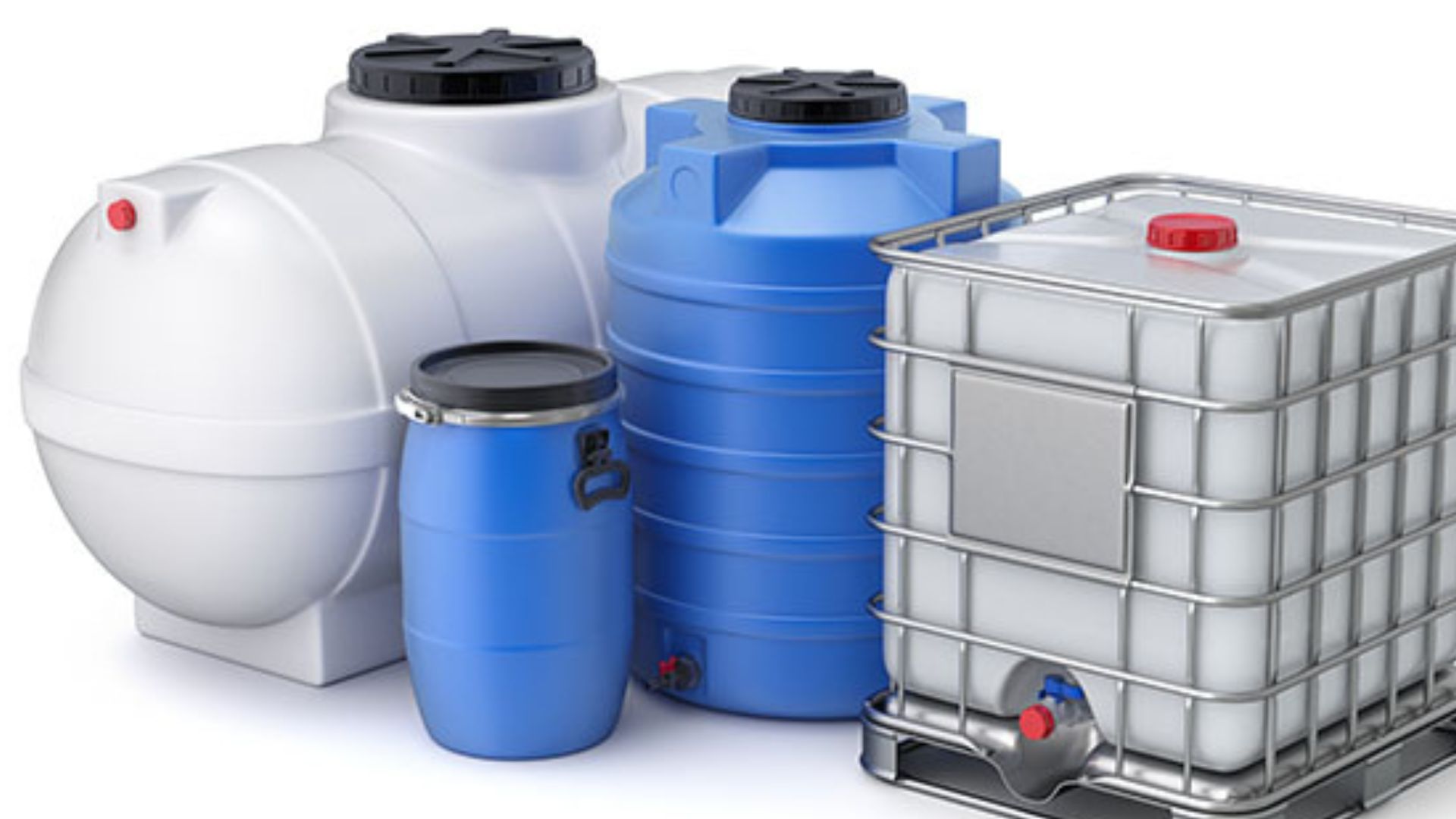
Use food-grade containers to store water, avoiding any that held non-food substances to prevent contamination. Properly sealed and stored, these containers keep your water supply safe for extended periods. (American Contingency)According to the Department of the Army, you need to drink half a liter of water when the ambient temperature is below 100°F. When it’s above 100°F (like it is now in sunny Florida and many other parts of the US), drink one liter per hour. This is just a rule of thumb; your needs may vary. I suggest mixing things up with electrolyte drink mixes as well. BUBS Naturals Hydrate or Die is one of the best out there. It’s my personal go-to when the mercury hits the triple digits.
In addition to drinking, remember you’ll need clean water for cooking and personal hygiene. You’ll also want to keep a couple of LifeStraws in your survival kit as well. They can turn questionable water into lifesaving water.
Water Storage Tips
- Store in Sturdy Containers: Use food-grade containers. Avoid storing water in anything that previously held non-food substances.
- Rotate Your Stock: Even water needs to be rotated. Stagnant water can develop bacteria or take on the taste of its container over time.
- Have a Filtration System: Invest in a portable water filter. Even with stored water, filtration adds an extra layer of security.
- Boiling: If filtration fails, boiling is your go-to method for making water safe. At elevations below 6,500 feet, bring clear water to a rolling boil for at least one minute. If you are above 6,500 feet, increase the boil time to three minutes.
Pro Tip: Collapsible plastic water cubes can be your new best friend. The hold about 5 gallons each and have a spigot to dispense the water. Best of all they are inexpensive and readily available online.
Grains: The Foundation of Your Food Storage
Grains are a military food staple for a good reason: they’re versatile, calorie-dense, and have an impressive shelf life when stored properly.

Wheat, for instance, can last over 30 years, while white rice and oats can remain viable for 25-30 years if kept in airtight containers with oxygen absorbers.
These grains are not only foundational for energy but also adaptable, forming the base for a variety of meals. For long-term storage, prioritize storing them in food-grade buckets or Mylar bags, ensuring they’re kept in a cool, dark, and dry environment to maximize longevity.
Long-Term Grain Storage
- Rice: White rice can last up to 30 years when stored properly.
- Wheat: Whole wheat berries are another excellent option. Grind them into flour as needed.
- Oats: Rolled oats are a great source of fiber and can be used in various dishes.
- Storage: Use Mylar bags with oxygen absorbers inside food-grade buckets for best results. This setup protects against pests, moisture, and light.
Canned Goods: Reliable, Ready-to-Eat, and Essential
Canned goods are the cornerstone of any reliable survival pantry for several reasons.

They’re ready to eat and nutrient-dense and come pre-cooked, eliminating the need for additional fuel or preparation — critical in emergency situations where resources might be limited. Canned meats, vegetables, and fruits provide essential proteins, vitamins, and minerals that help maintain energy and health over time.
Additionally, depending on the product, most canned goods have a long shelf life, typically lasting 2-5 years or more. Keep them in a cool, dark place for optimal storage, and regularly rotate your stock to ensure freshness, using the “first in, first out” (FIFO) method.
What to Store
- Canned Meats: Chicken, tuna, and beef are good sources of protein.
- Vegetables: Green beans, corn, and peas offer essential vitamins and minerals.
- Fruits: Peaches, pineapples, and apples provide much-needed sugars and vitamins.
- Soups and Stews: These can be meals in themselves and provide a morale boost.
Canned Goods Tips
- Check Expiration Dates: Rotate your stock using the FIFO (First In, First Out) method.
- Store in a Cool, Dark Place: This prolongs shelf life and preserves flavor.
- Include a Manual Can Opener: Don’t rely on electric can openers. In a power outage, you’ll need a manual one.
What if the zombie apocalypse comes and you don’t have a manual can opener? Let’s hope you have a heavy-duty survival knife to use on the inner edge of the can lid. If you have to resort to items like rocks and spoons to open a can, it can be done, but you’re gonna have a long day.
Freeze-Dried and Dehydrated Foods: Lightweight and Long-Lasting
Freeze-dried and dehydrated foods have been staples in military rations due to their practicality and longevity. These foods are incredibly lightweight and compact, making them ideal for situations where space and weight are at a premium, such as in military operations or emergency kits.
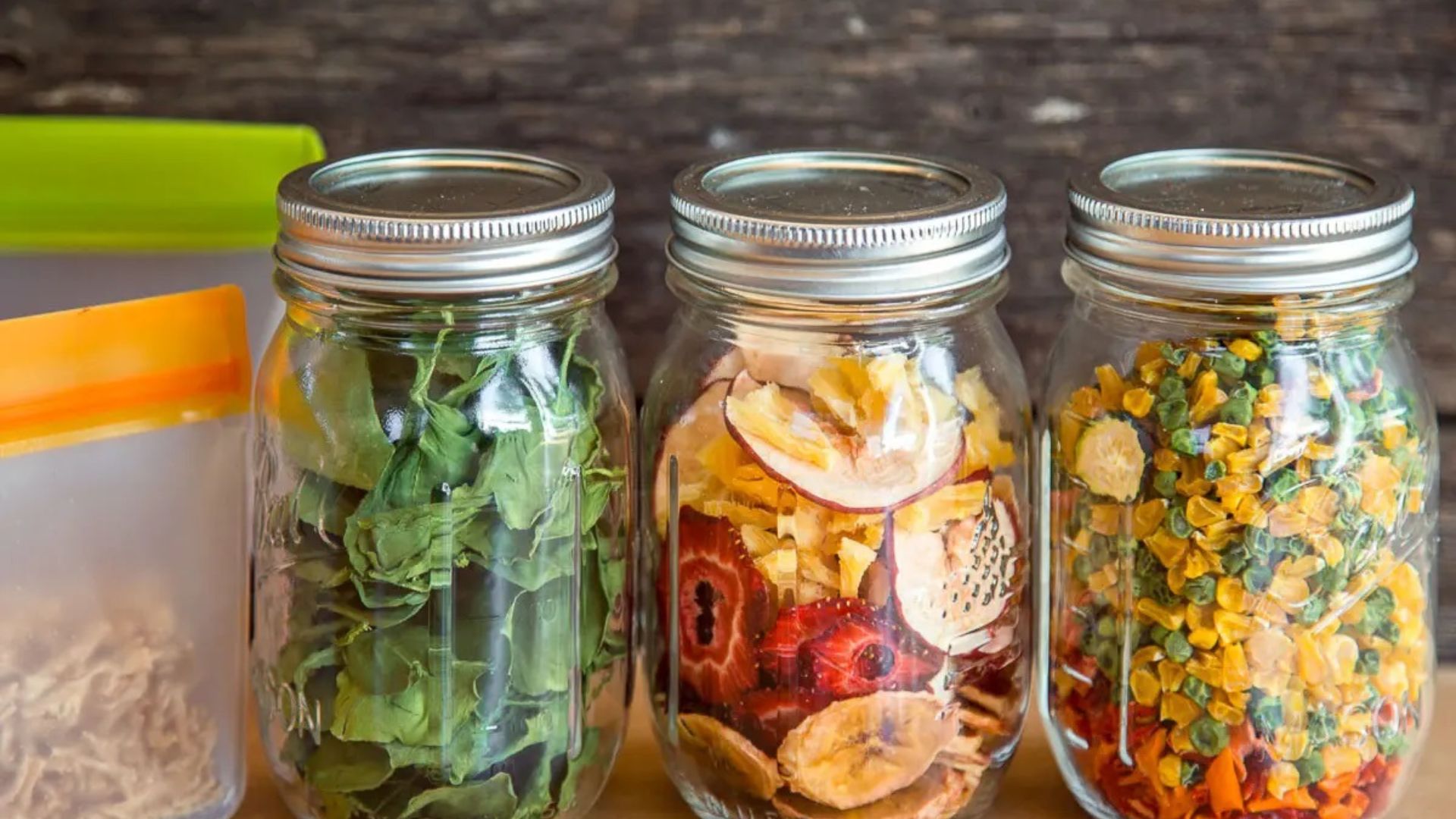
Freeze-dried foods, in particular, retain most of their nutritional value and rehydrate quickly with water, providing a reliable source of essential nutrients. When stored properly, sealed in airtight containers with oxygen absorbers and kept in a cool, dry, and dark environment, these foods can last up to 25 years.
This extended shelf life, combined with their convenience and nutritional preservation, makes them invaluable for long-term food storage. Additionally, freeze-dried meals are often balanced, including proteins, vegetables, and grains, which are crucial for maintaining health during extended periods of use.
Freeze-Dried vs. Dehydrated
- Freeze-Dried: Retains more nutrients and rehydrates quickly, making it an excellent option for meals on the go.
- Dehydrated: Slightly less expensive but takes longer to rehydrate and may lose some nutritional value in the process.
Best Options for Storage
- Meals: Look for balanced meals that include proteins, vegetables, and grains.
- Ingredients: Stock individual items like freeze-dried meats, vegetables, and fruits to mix and match for different recipes.
Pro Tip: Investigate ultralight replacement meals like those made by RecPak. I’ve personally tried these out in the wilds of Las Vegas during SHOT Show a couple of years back. One bag of this stuff will keep you going all day and then some. SOF guys discovered this stuff years ago as a way to travel light, eat on the move and get plenty of vitamins and minerals.
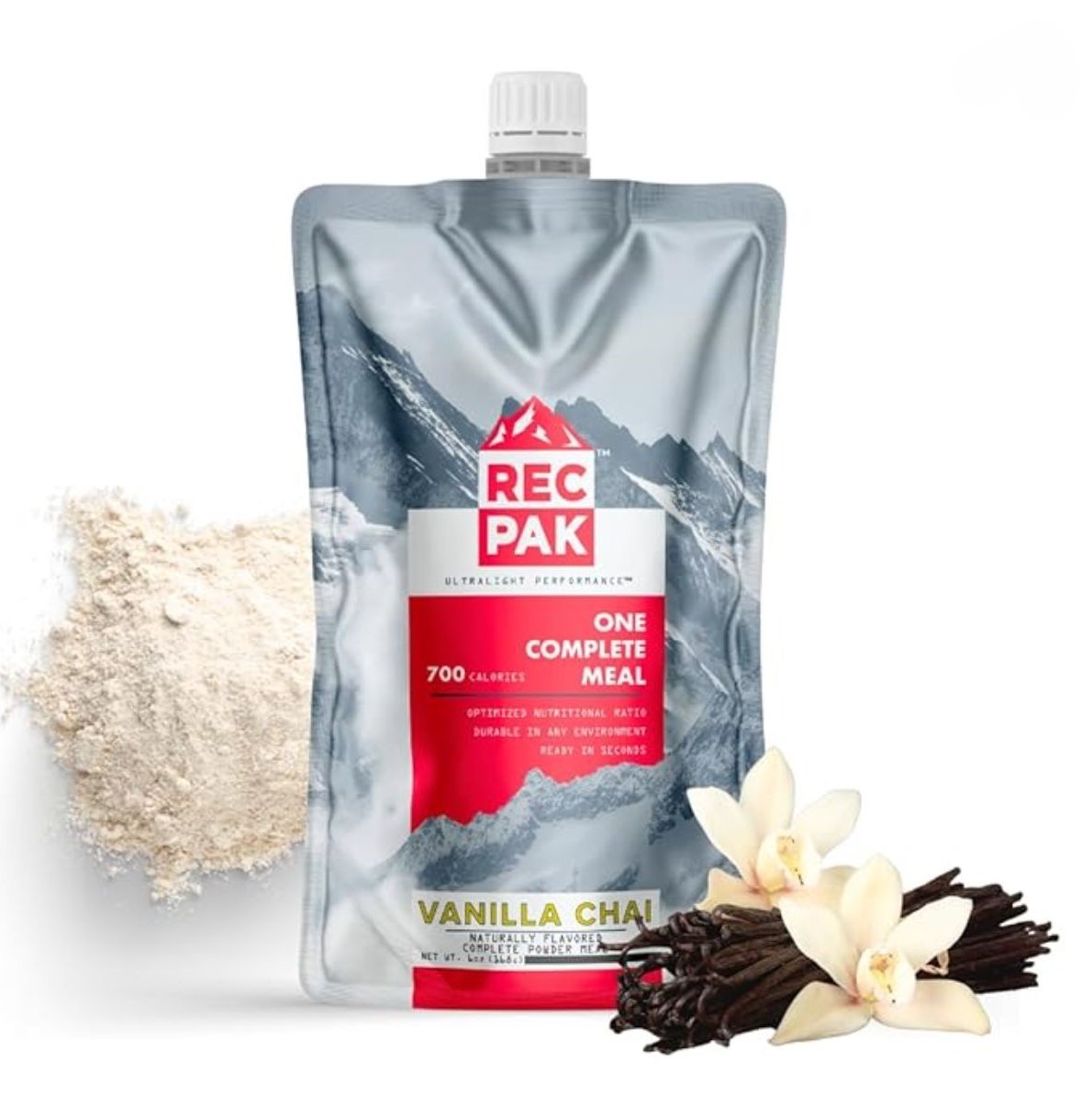
Bulk Foods: Beans, Pasta, and Essentials
Bulk foods are an essential component of any long-term storage plan due to their affordability, nutritional value, and ease of storage.

Staples like beans, pasta, and grains such as rice or wheat provide a solid foundation for sustaining a well-balanced diet over extended periods.
Beans, for example, are rich in protein and fiber, while pasta and grains offer essential carbohydrates and energy. These foods are typically available in large quantities at low cost, making them economical to stockpile.
When stored in food-grade buckets with airtight lids and oxygen absorbers, bulk foods can remain fresh for many years, often lasting up to 10-30 years, depending on the type and storage conditions. Proper labeling and rotation ensure that your stock remains viable, providing a reliable food source when needed most.
What to Stock
- Beans: Pinto, black, and kidney beans are excellent sources of protein and fiber.
- Pasta: Simple to cook and a great base for many meals.
- Sugar and Salt: Essential for cooking, preserving, and morale.
Storage Tips
- Use Mylar Bags: Like with grains, store bulk foods in Mylar bags with oxygen absorbers inside food-grade buckets.
- Label Everything: Clearly mark each container with the contents and date of storage.
The Military Perspective: Planning for All Scenarios
In the armed forces, we’re ingrained with the mindset to always expect the unexpected, whether it’s a sudden deployment or facing a disaster in the field. This level of preparedness isn’t optional; it’s essential for survival.
The same principles apply to long-term food storage. Just as a well-executed mission relies on meticulous planning and contingency strategies, so does effective food storage.
It’s about more than just stockpiling supplies; it’s about having a well-thought-out plan that includes proper storage methods, rotation schedules, and redundancy to ensure that you can weather any crisis. By applying this military mindset to your food storage, you can maintain readiness and resilience, no matter what challenges come your way.
Plan for Redundancy
- Multiple Locations: Don’t keep all your supplies in one place. If one location is compromised, you’ll have backups.
- Scalability: Start with a 30-day supply and build up from there. You don’t need to go from zero to a year’s supply overnight.
- Diversification: Just like in a military operation, don’t rely on one type of food or storage method. A diversified approach ensures that if one supply line fails, you have others to fall back on.
Managing Expiration Dates and Rotating Stock
Managing expiration dates in a long-term food storage plan is a critical yet often overlooked aspect of ensuring your supplies remain safe and edible. It requires diligent record-keeping and a systematic approach, such as the First In, First Out (FIFO) method, where the oldest items are used first.
Regularly checking expiration dates and rotating stock prevents food from spoiling and reduces waste. Keeping a detailed inventory log with dates, quantities, and storage conditions helps you stay organized and aware of what needs to be consumed or replaced.
Additionally, investing in foods with naturally longer shelf lives, like grains and freeze-dried items, can ease the burden of frequent rotation, allowing you to maintain a robust and reliable food supply over the long term.
Inventory Management
- Use a Spreadsheet: Keep a digital or physical log of everything in your storage, including expiration dates and quantities.
- Set Reminders: Every three to six months, do a full inventory check. Rotate out items that are nearing their expiration dates.
Inventory Log Example
| Item | Date Stored | Expiration Date | Quantity | Notes |
|---|---|---|---|---|
| White Rice | 01/2023 | 01/2053 | 50 lbs | Stored in Mylar with O2 absorbers |
| Canned Chicken | 06/2023 | 06/2026 | 24 cans | Rotate by 2025 |
| Freeze-Dried Beef | 03/2024 | 03/2049 | 12 pouches | Long-term storage |
Non-Food Essentials
In a long-term survival situation, non-food items can be just as critical as food itself. Here’s what to consider:
Essential Non-Food Items
- Cooking Oil: Necessary for cooking and has a shelf life of up to two years if stored properly.
- Salt and Sugar: Indispensable for food preservation and seasoning.
- Vitamins: If your diet becomes limited, a good multivitamin can help prevent deficiencies.
- Fire Starters: Matches, lighters, and flint are must-haves for starting fires for cooking or warmth.
- Manual Tools: A hand-crank can opener, manual grain mill, and basic kitchen tools.
Military Take on Food Storage
Food storage and preparation isn’t just about having enough to eat — it’s about maintaining your operational capability under any circumstances.
In the military, food goes beyond mere sustenance. It’s a critical source of morale and energy, playing an integral role in the success of long-term missions. Soldiers know that a well-fed team is a capable team.
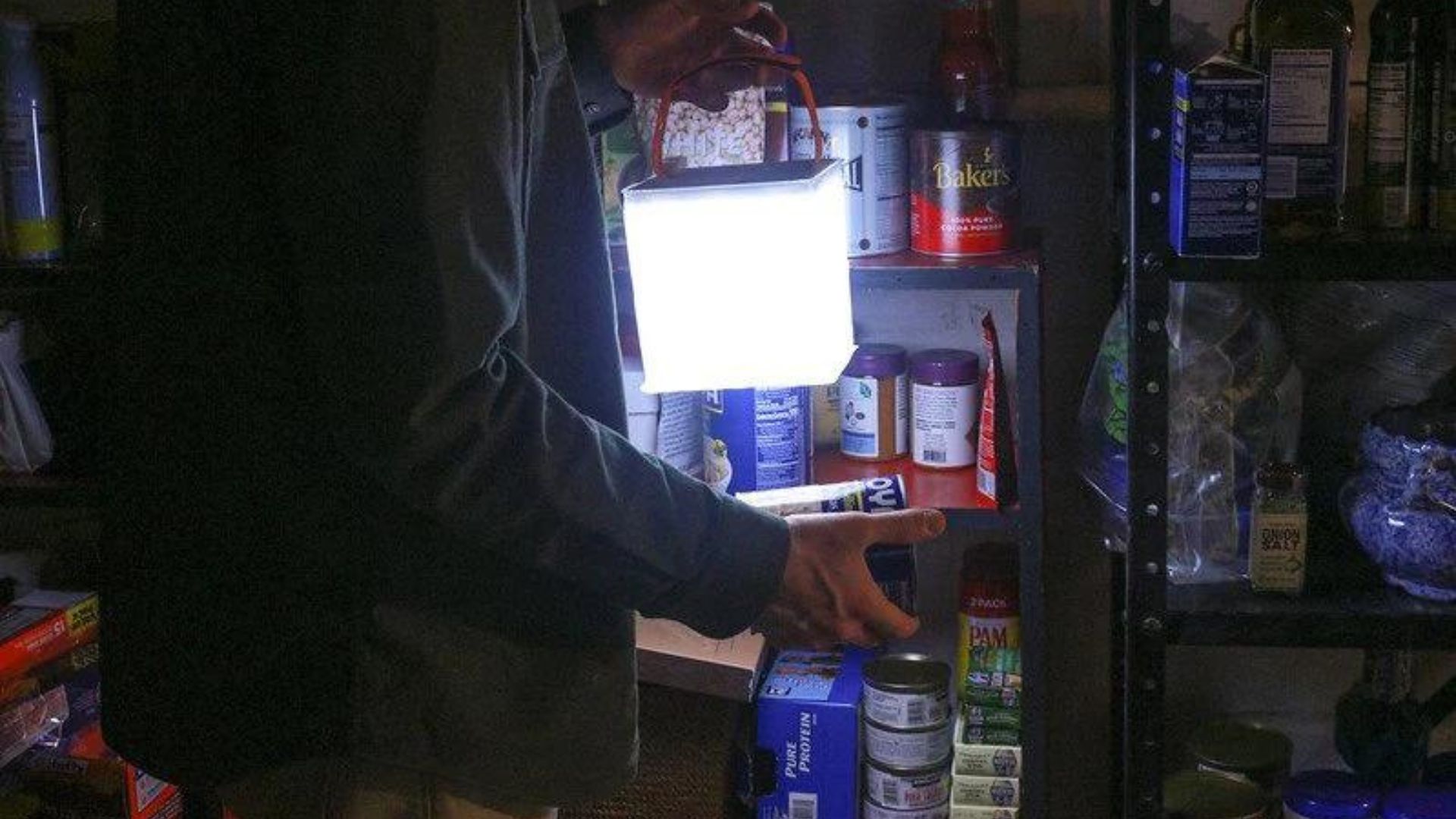
The importance of food planning extends from the smallest tactical unit to large-scale operations, where supply lines are the lifeblood of sustained combat effectiveness. Depleted rations can lead to reduced physical and mental performance, making the difference between success and failure in high-stakes situations.
In a civilian context, adopting a military-grade approach to food storage gives you a significant advantage. It’s about foreseeing potential disruptions, creating robust plans to mitigate them, and developing the flexibility to adapt when circumstances change.
This mindset isn’t just about surviving; it’s about ensuring you can continue to function at a high level, maintaining your strength, decision-making capability, and overall resilience.
When the unexpected occurs—whether it’s a natural disaster, economic collapse, or other crises — those who have meticulously prepared, considering not just quantity but also the quality and nutritional value of their food stores, will be the ones who survive, thrive, and take the lead.
A Lifeline in Crisis
In my years of service, I’ve learned that the right food essentials can make all the difference in a crisis. I’ve also learned to live off the land; we’ll get into that in a future article.
A well-stocked food supply isn’t just about survival; it’s about being ready for anything. By storing the best essentials such as grains, canned goods, freeze-dried foods, and more — you’re ensuring that you and your family are prepared for whatever challenges arise.
It’s not about fear; it’s about smart preparation.
With the right supplies on hand, you can face any situation with confidence, knowing you’ve done everything possible to safeguard your future.
__
Disclaimer: SOFREP utilizes AI for image generation and article research. Occasionally, it’s like handing a chimpanzee the keys to your liquor cabinet. It’s not always perfect and if a mistake is made, we own up to it full stop. In a world where information comes at us in tidal waves, it is an important tool that helps us sift through the brass for live rounds.

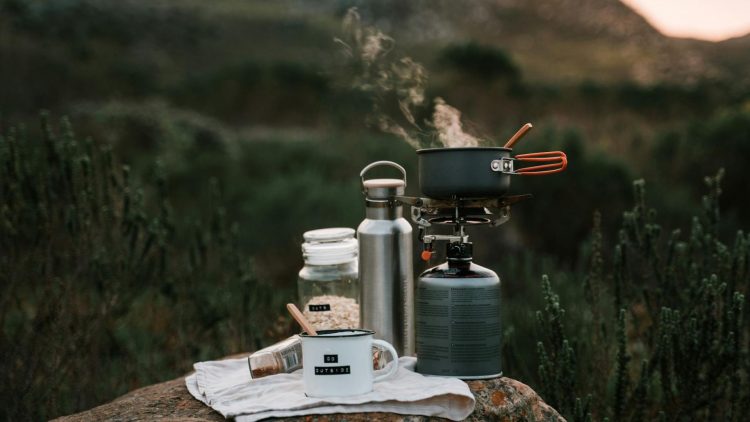








COMMENTS
You must become a subscriber or login to view or post comments on this article.